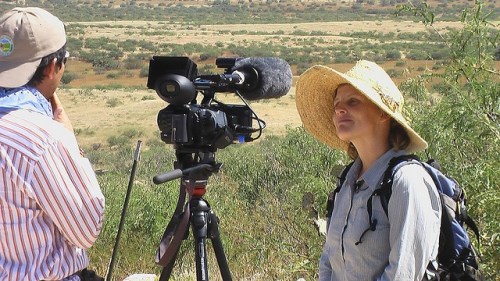
When I launched my first business venture as a documentary filmmaker over 30 years ago, I wish I knew then what I know now. It would have saved me a lot of grief. I’m older and “somewhat” wiser now and hope that these lessons learned from the trenches will be of help to you.
Here are 10 mistakes to avoid.
1. No savings.
Don’t do what I did. I catapulted myself into the world of independent documentary filmmaking without a dime in the bank. It was gutsy but unwise. I spent several years, desperate and struggling. Getting a personal history business up and running is going to take at least a year or two of hard effort. Give yourself some peace of mind by knowing that those lean years are covered by your savings. You’ll sleep better at night.
2. Not charging what your worth.
Lowering your rates in the hopes of landing a contract is a recipe for failure. Once you’ve set low rates, it’s hard to increase them. You’ll end up not making enough income to support yourself. Overworked and burned out, you’ll eventually give up. Remember you’re a professional with years of experience. Being underpaid does nothing for your self-esteem and nothing for your business.
3. Choosing the wrong business partner.
This is another mistake I made. I spent too much of my emotional energy resenting the fact that my partner wasn’t carrying a fair share of the business load. After a year I got out of the partnership and never looked back. Don’t get me wrong, a business partner can be a great asset but choose wisely. Look for someone who shares your values and can assist you in areas where you’re deficient.
4. No contract.
You don’t have to produce a “door stopper” legal document. But minimally you need a letter of agreement to avoid complications. The agreement include a project description, fees, timelines, and terms of payment.
5. Failing to say ‘no’.
When you’re starting out, it’s tough to say ‘no’ to a low paying job or to say ‘no’ to a troublesome client. You reason that working for something is better than nothing. But time spent laboring for ‘peanuts’ means missed opportunities to land some major contracts. And just because you’re starting out, doesn’t mean you have to suffer the “client from hell”.
For more on saying ‘no’ check out my previous article The Power of “No”.
6. Doing everything.
I’ll admit I still tend to try and do everything. And part of that is okay. What I like about being a personal historian is that I get to wear different hats. But doing everything becomes counterproductive when you take on tasks for which you have little skill. For example, I’m not adept at bookkeeping which is why I have an accountant. And while I love graphic design and have a reasonably good eye, I would always hire a designer for a major book project.
Play to your strengths and hire out to manage your shortcomings.
7. Failing to keep detailed records.
Throwing receipts into a shoe box and then hauling them out at tax time is no way to run a business. I’ve done that! You need to keep an electronic record of your income and expenses on a monthly basis. This not only gives you a means of assessing the health of your enterprise but also provides accurate records for your tax return.
8. Not putting money aside for taxes.
I know from experience this can be tough. If you’re barely able to pay your bills, setting aside money for the tax man seems like a non-starter. But getting to the end of the year and finding you have a tax bill of several thousand dollars and not a penny to spare is devastating. It can lead to bankruptcy or giving up your dream to take a job to pay your taxes.
9. Failure to devote enough time to marketing.
Most personal historians I know would rather be cast off on an ice floe than market their business. Including me. But the truth is that unless people know you exist, they won’t be able to hire you. And your business will fail.
The start up for any business requires extra marketing effort. This means more than putting up a web site, printing business cards, and sending out a press release. The trick is to get out of your office and go where you’re clients are likely to be found.
Here are some previous articles I’ve written that you might find useful:
10. Pretending to be something you’re not.
When you’re starting out, it’s natural to feel vulnerable. You worry that people won’t take you seriously if they know you’re a one-person operation. So there’s a temptation to create a “corporate” identity that projects an image of “we” rather than “I”. But honesty is the best policy. It builds trust. In today’s world of box stores and indifferent mega corporations, your strength is the personal, caring attention you bring to your clients. Be proud to be a solopreneur!
Also, don’t pretend you’re multi-talented if you’re not. If your cash flow is drying up, it’s tempting to take on a lucrative project even though you’ve little or no expertise to pull it off successfully. You’ll end up with disappointed clients and bruised self-esteem.
Conclusion
Avoiding these mistakes won’t guarantee success. But they’ll make your start up more enjoyable and less likely to fail.
What are some of the lessons you’ve learned the hard way? Please share them. Your experience will benefit all those newcomers to the personal history business.
If you enjoyed this post, get free updates by email.
Photo by mischelle
 One of the questions I get asked when someone has been invited to give a presentation on personal histories is “How much should I charge?”
One of the questions I get asked when someone has been invited to give a presentation on personal histories is “How much should I charge?”













